Paphiopedilum: description, types and cultivation
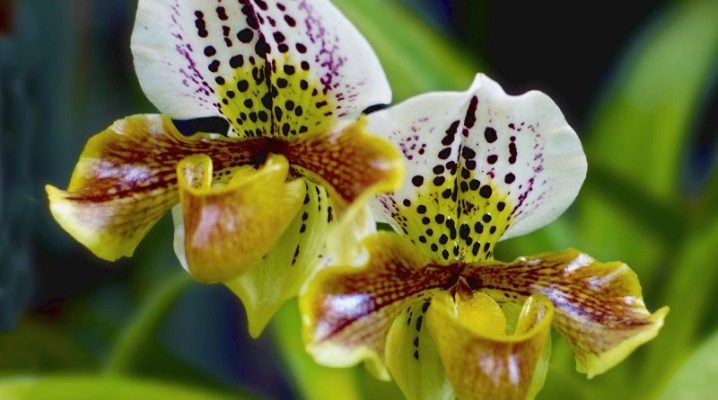
Orchids are considered the most beautiful flowers, which is why they are very popular with flower growers. These mysterious "beauties" are easily cultivated and today have become not only greenhouse plants, but also indoor plants. Despite the fact that all varieties of flowers are characterized by an attractive appearance, the papiopedilum orchid is in special demand.
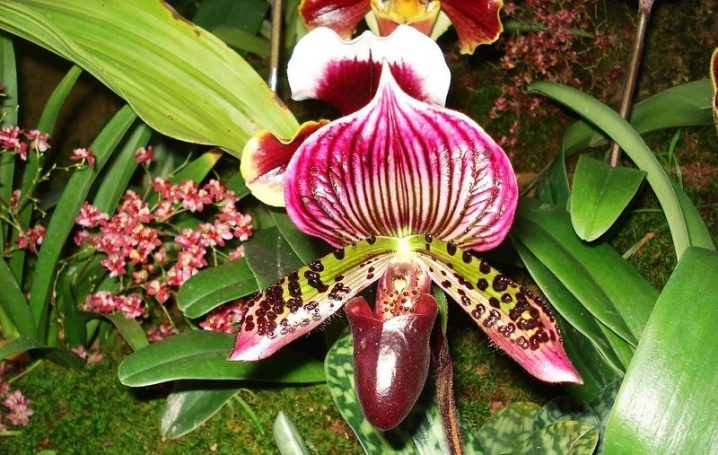
Peculiarities
Paphiopedilum ("lady's slipper") is a perennial plant, some species of which can grow on rocks and trees. This orchid, as a rule, grows under the crowns of large trees, in leafy humus. It is most often found in Nepal, Southeast Asia, as well as in southern China. The flower belongs to the Orchid family (it became an independent genus at the end of the 19th century) and today it is represented by more than 70 species.
Since the botanical name of the orchid is difficult to pronounce, it was replaced with a simpler term - "slipper", but this "lady's slipper" should not be confused with the cypripedium orchid, which is also called that. Unlike papiopedilum, her sponge (shoe) looks more neat and this plant grows mainly in tropical zones. The sizes of "lady's shoes" are 5 to 20 cm in diameter; nature has endowed these flowers with luxurious colors, which include all shades of green, white, red and yellow. In addition to the main palette, orchids also have additional contrasting elements - stripes, dots and blotches. Thanks to this original color scheme and flowering period, which lasts up to 4 months, paphiopedilum looks unusual and attracts special attention of flower growers.
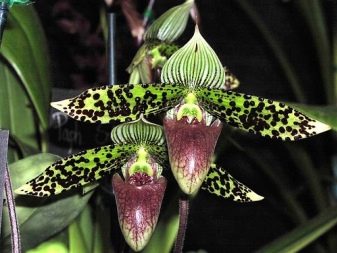
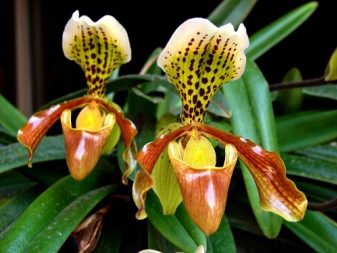
The stems of the plant are slightly shortened, their height is from 4 to 60 cm, the root rosette is created by the leaves. Their plates can be either bright green (monochromatic) or decorated with a marble or spotted texture. This gives the flower a decorative effect and provides beauty not only due to the flowers, but also to the foliage. Depending on the growing conditions or growth (not in nature), the leaves are longitudinal, belt-shaped and broad-linear. They are soft and juicy.
The upper layer of the flower is wide and often brightly colored. It has the shape of a visor that covers the inside of the shoe and the reproductive organs of the plant, protecting them from water ingress. As a rule, of the three anthers, only one or two bears fruit, while the third is the thyroid body, which covers the reproductive organs. The root system of the lady's shoe is well developed.
The buds of various colors are covered with a light fluff and outwardly they seem to be waxy and dense. The size of the flowers and the flowering time of the orchid depend on its varietal characteristics. The flower of the plant is characterized by symmetry, it usually consists of 6 petals, one of which stands out for its huge size and saccular shape. In some varieties of papiopedilum, the flowers can have a pronounced roundness, waviness, be shorter or longer.
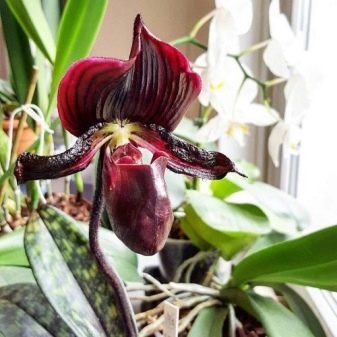
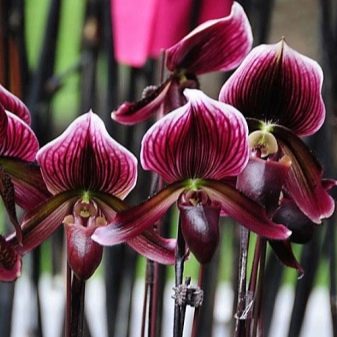
The buds form on the stem and are multi-flowered or single-flowered inflorescences. In single-flowered inflorescences, up to two flowers bloom simultaneously on the pursuit. Multiflorous orchids grow more slowly, they are demanding to care for and begin to bloom mainly in the eighth year of growth.Their inflorescences are formed from three or more flowers, which open in turn. In some varieties of papiopedilum, this number of flowers can reach up to 30 pieces.
Despite the fact that the "lady's slipper" most often grows in open areas, many gardeners successfully grow it at home.
To properly grow such a flower, you need to know its varietal description and follow all the rules of care.

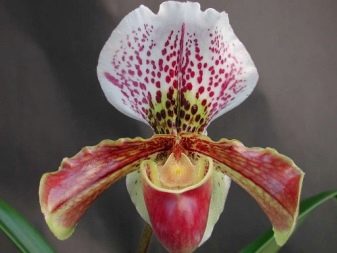
Varieties
Paphiopedilum is presented in various varieties and species, each of which has its own characteristics and characteristics. The following popular varieties are suitable for growing orchids in apartments and houses.
- "Vietnamese"... It is considered the most common plant species that is resistant to diseases and easily tolerates transplantation. It has very beautiful flowers, few foliage and aerial roots.
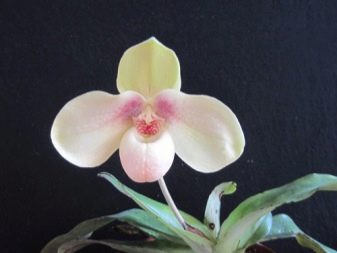
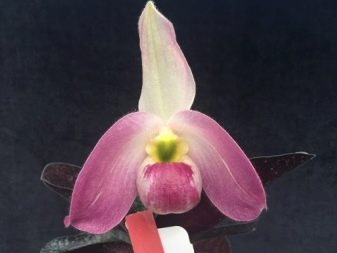
- Bellatulum. Most often it grows wild on the islands of Indochina, India and Malaysia, but it can often be found on the windowsills of apartments. The main distinguishing feature of the variety is its large foliage, which is decorated with patterns. The stems of the plant are small, on each of them only one cream or white flower is formed.
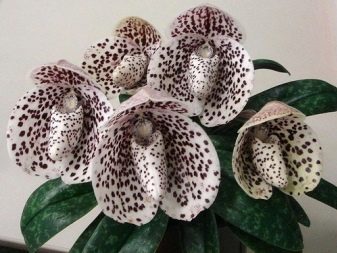
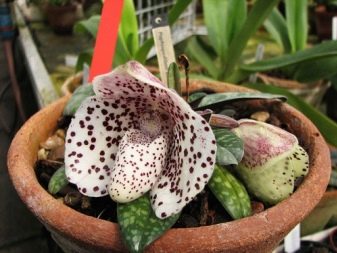
- Delofillum. Vietnam is considered his homeland. This is a low-growing plant, covered with small leaves up to 10 cm long. The leaves of the flower give it a special look and decorative effect, since various colored spots and patterns are placed on them. Such an orchid, with proper care, can please with two large flowers, in which the lip (shoe) looks like a huge ball. The color of the petals is different, ranging from white to purple, yellow.
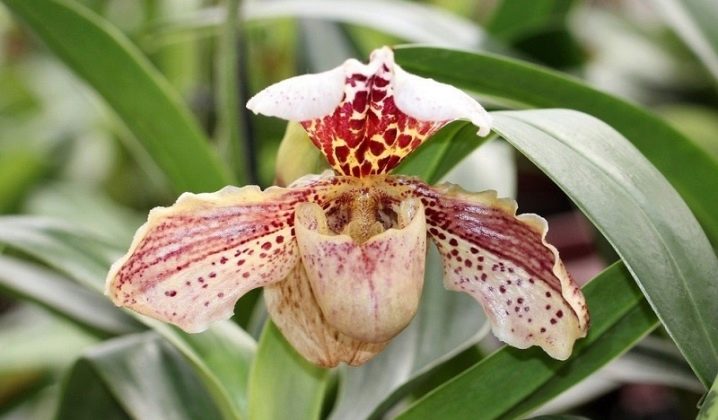
- Femma. It is an unusual beauty orchid, the root rosette of which is small and rounded. The leaves of the plant are dark green, often covered with patterns in the form of light stripes. The shoot is placed above the rosette, one light-green bud is formed on it, while the middle and edges of the petals are white.
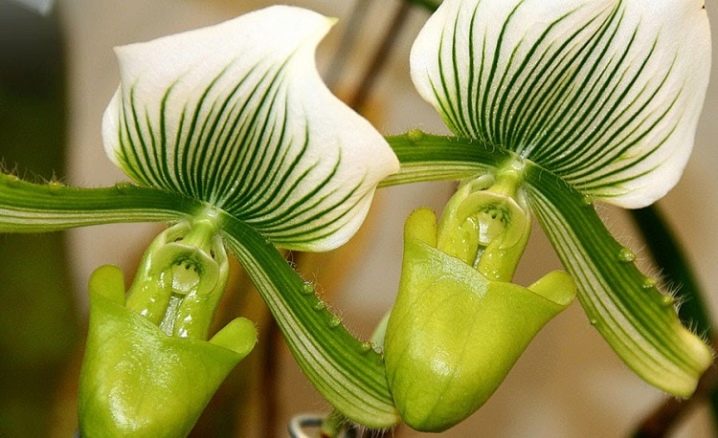
- "Conclor". It is an attractive crop with a rather long variegated foliage. The lower part of the leaves is sprinkled with purple dots. This variety has a low stem, usually from 2 to 4 flowers of yellow or light green color appear on it.

- Maudi. It is a short variety with a neat, medium-sized rosette. The foliage of the orchid is dark green with slightly noticeable light green stripes. An even stem is formed from the outlet, where only one purple bud appears during the flowering period. There are also varieties of varieties in which the "shoe" is painted in a side color.
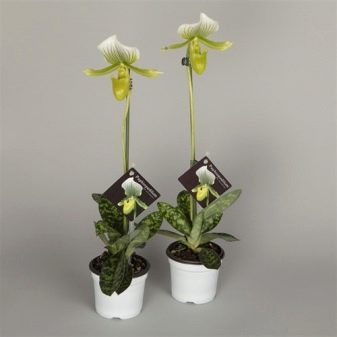
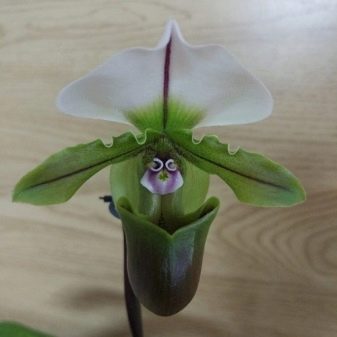
- "Black Jack". Although this American hybrid is an indoor flower, it is rarely found in homes. The orchid releases several maroon buds during flowering. Since the plant is too capricious to care for, only experienced gardeners can grow it.
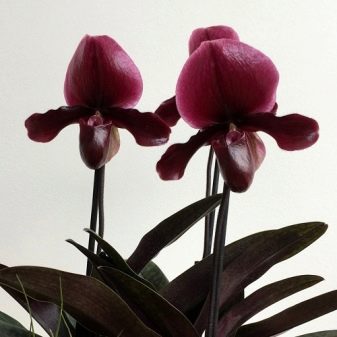
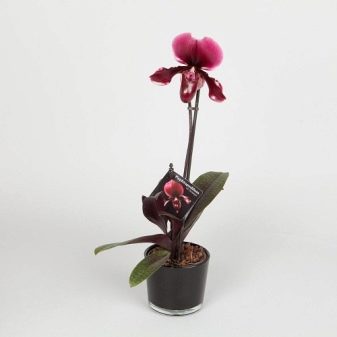
- Pinocchio. It is also a hybrid variety with long leaves and a tall stem. The flower petals are snow-white with brown dots in the middle.
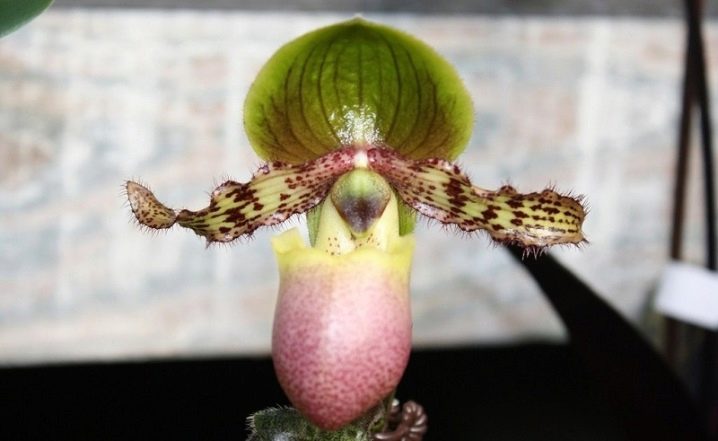
- "America". This variety has ribbed long leaves, over which a dense stem with one bud rises. The color of the petals is light green with transitions to burgundy. The middle of the inflorescence is yellow, the sepal is green at the bottom, white on top, in the center it has purple dots.
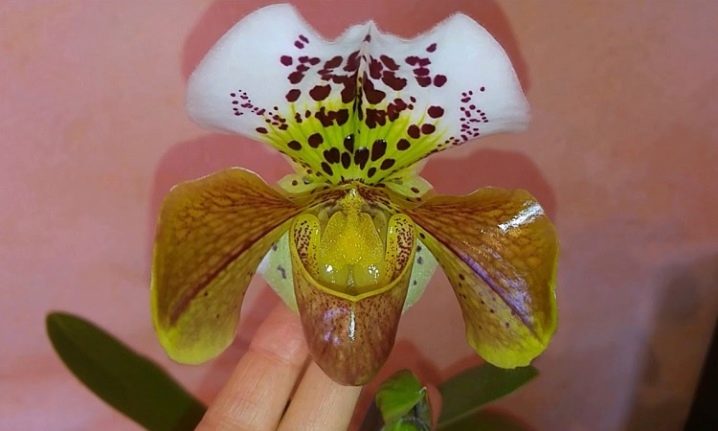
- "Robin the Hood". The most affordable variety for self-cultivation at home, as it is not too demanding in care. The plant consists of two rosettes, on each of which one flower of a light burgundy hue appears.

- Mikrantum. This plant was brought from Vietnam, it differs from other varieties by its simple care and a large bright flower. In addition to its beautiful appearance, the orchid gives a delicate aroma during flowering.
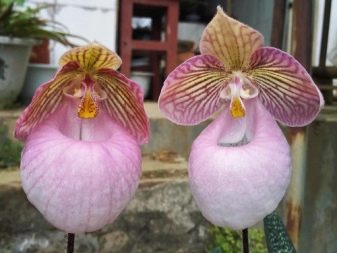
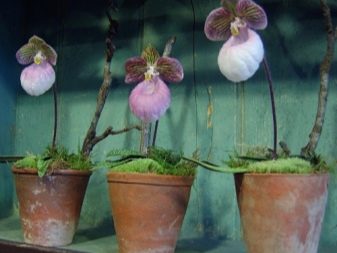
- "Armeniakum". This miniature orchid, during flowering, gives one orange bud, its diameter does not exceed 11 cm.The lip of the inflorescence is slightly flattened, saccular. For normal development, the plant requires a certain temperature and humidity.
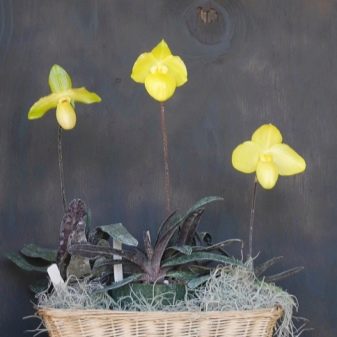
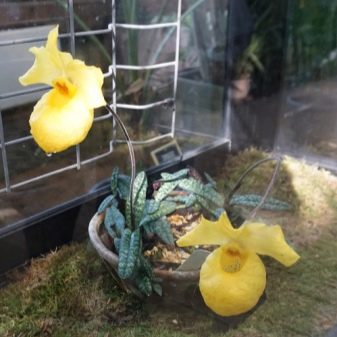
In addition, other types of papiopedilum are very popular, for example, "Wanda", "Fluttering Butterfly", "Beauty" and "Lawrence". All of the above varieties bloom for a long time, from autumn to spring.
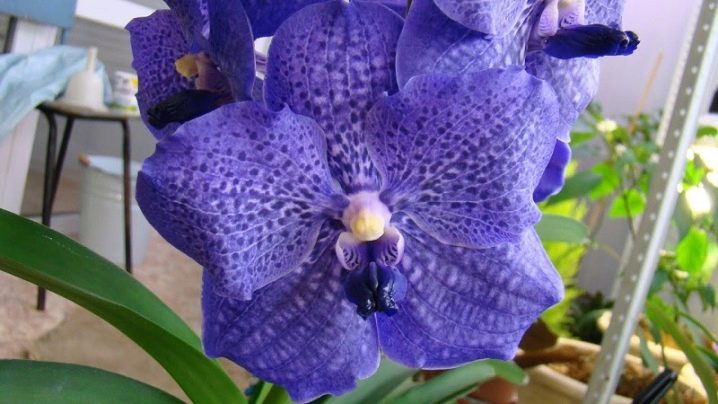
Transfer
Orchids are planted in a special soil designed for indoor plants; ordinary soil cannot be used. This type of plant requires soil for planting, which includes bark, charcoal, lime and sphagnum. In addition, it is worth paying attention to the fact that the "Venus shoe" is not recommended to be transplanted into ceramic pots, as their root system is well developed and the rhizome can cling to a rough surface, which will cause many problems during subsequent transplantation. Therefore, papiopedilums are best planted in a transparent pot.
So that such a container does not spoil the overall interior of the room with its appearance, it can be put in the original pots.

Care
Paphiopedilum is considered one of the most capricious plants, as it is very demanding to care for. It takes a lot of effort and patience to grow a luxurious flower at home. If the orchid receives everything it needs for growth and development, it will delight with beautiful flowering once a year at the same time. With proper care, the plant will reach its maximum growth, stop developing and will definitely bloom.
To do this, it is important to always maintain a certain temperature regime in the room, perform timely watering and apply top dressing.
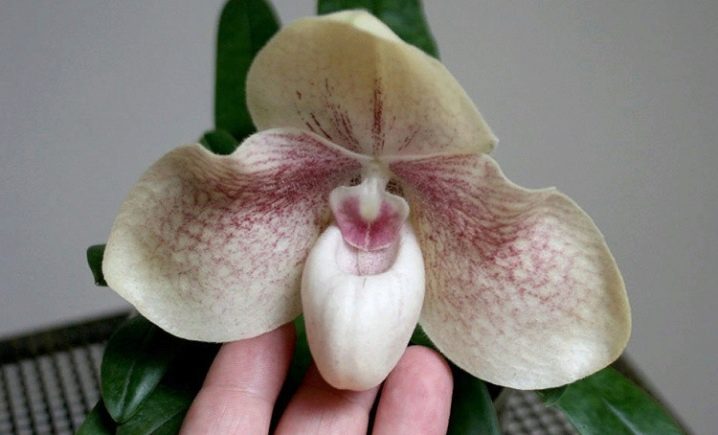
Lighting
Like all indoor plants, the orchid loves light, and the intensity of the light depends on the characteristics of a particular variety. For example, for papiopedilum with green foliage, in which many flowers are formed on the peduncle, diffused and bright light is needed. For varieties with spotted leaves and few flowers on the stem, lighting can be moderate (shaded areas and northern windows are great). As for the winter time, all types of papiopedilum require additional lighting, for this, artificial light sources should be used and the plant should be provided with up to 12 hours of daylight.
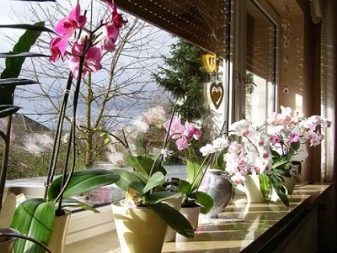
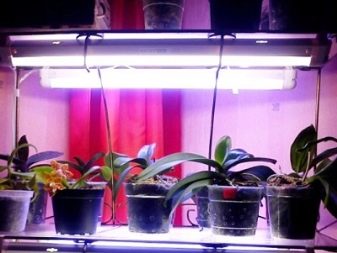
Temperature and humidity
"Lady's slipper" refers to thermophilic crops, so it needs a constant temperature, the level of which is determined separately for each variety. So, orchids with spotted foliage grow successfully in rooms where the temperature range is from +18 to +23 degrees. For plants with green and narrow leaves, it is best to maintain a temperature within +25 degrees. Revolving varieties (with consistent or continuous flowering) love temperatures up to +19 degrees. "Beauties" with wide foliage are suitable for temperatures ranging from +17 to +20 degrees. It should be noted that proper care provides for a difference between day and night temperatures of 3 degrees.
The air humidity in the room where the flowers are placed also plays a huge role. In hot weather, it should be above average (the norm under normal conditions is from 40 to 50%), therefore in the summer it is recommended to increase the humidity to 70%.
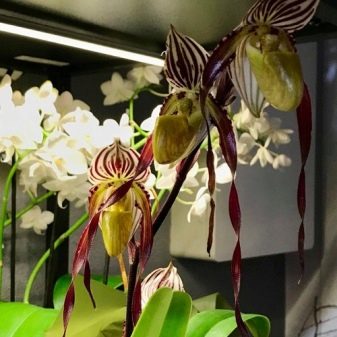
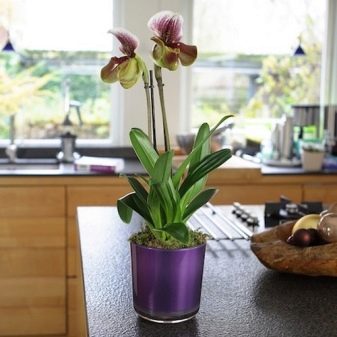
Watering
Paphiopedilum prefers moderate watering, but it should be watered more during the growing season. When the flowering period begins, the frequency of "water treatments" is reduced. This also applies to the dormant period - watering is carried out only when the soil is dry. Vigorously watering the plant usually begins with the appearance of new leaves and shoots, while the leaves should not be sprayed, as this can cause the appearance of brown spots on them.
Before budding begins, the soil in the pot is allowed to dry out to a greater depth, since drought in this case will stimulate flowering.Water for irrigation is used at room temperature (it is advisable to pre-defend it for three days or filter it).
Experienced flower growers recommend watering such orchids using the lower method - a pot with a plant is immersed in a large container of water, having previously covered the soil with a net.

Top dressing
Top dressing, which can be performed with special mixtures previously placed in water, is also considered important in caring for orchids. Mixtures containing phosphorus, calcium and nitrogen are well suited for papiopedilum. The dosage of fertilizers is selected in accordance with the instructions on the package. You need to add minerals twice every 15 days. During dormancy and flowering, the plant does not require fertilization.
It is also impossible to feed only purchased and transplanted flowers, since they are weakened and need drugs that stimulate growth.
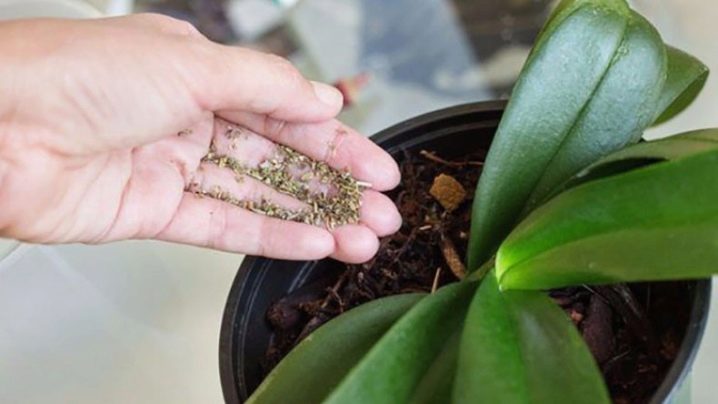
Reproduction
Paphiopedilum easily multiplies at home only by dividing the bush during transplantation. To do this, the orchid must grow at least three rosettes. Reproduction is usually performed several years after planting. It is advisable to do this in the spring or after flowering. Before transplanting, the orchid is divided into small parts so that each of them has its own roots and 2-3 shoots. A new pot is chosen larger than the old one by 5 cm in diameter. It is covered by a quarter of drainage, consisting of crushed stone, expanded clay and pebbles, then add soil, compacting it with a stick.
The shoots must be deepened by 1.5 cm, upon completion of the transplant, the plant is well watered and placed in a place protected from direct sunlight.
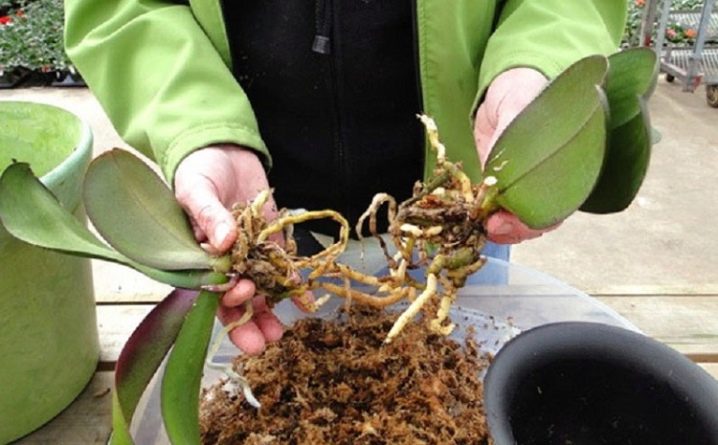
Diseases and pests
"Lady's slipper", like all other types of orchids, is subject to certain diseases and can suffer from pests. The greatest damage to the plant is caused by the scale insect, mealybug and spider mite. These pests are very easy to notice: when the scabbard appears on the foliage, slimy growths are formed, the spider mite, settling on the leaves, entangles them with a thin cobweb, and the worm, feeding on the juice of the foliage, leaves sticky secretions on it. Therefore, if the flower has stopped growing, and its leaves began to curl and dry, you need to immediately apply treatment measures. To do this, first of all, you need to remove insects by washing the orchid with warm water, then the remaining pests are destroyed with chemicals, processing the foliage.
In addition, papiopedilum can hurt, which is most often caused by improper watering. As a result, the roots become rotten, the flower begins to wither and dry. To prevent this, it is necessary to control the frequency of watering and observe a certain temperature regime and humidity in the room. If the plant is sick, it must be transplanted, after having performed the processing and cleaning of the roots. The affected areas of the roots are removed.

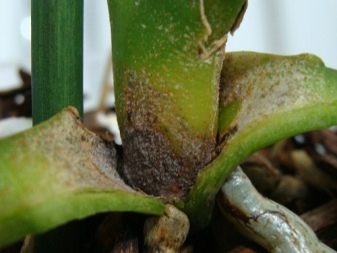
You can find out how to care for the Pafiopedilum orchid below.































The comment was sent successfully.